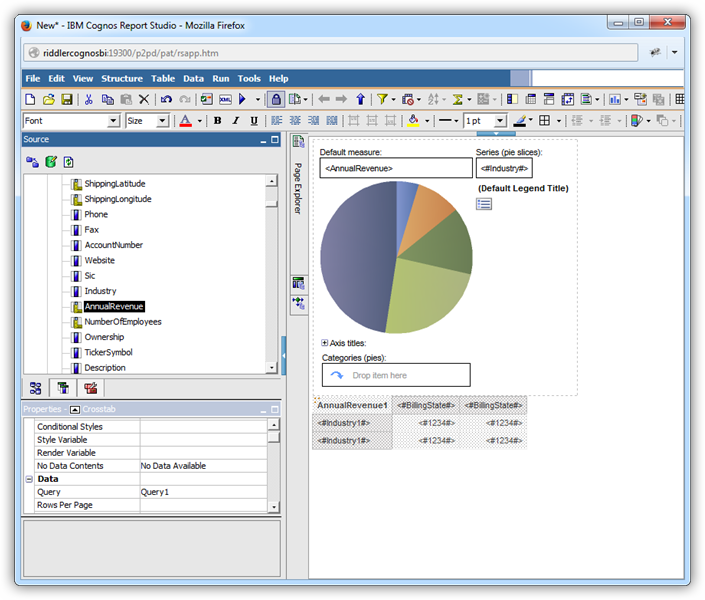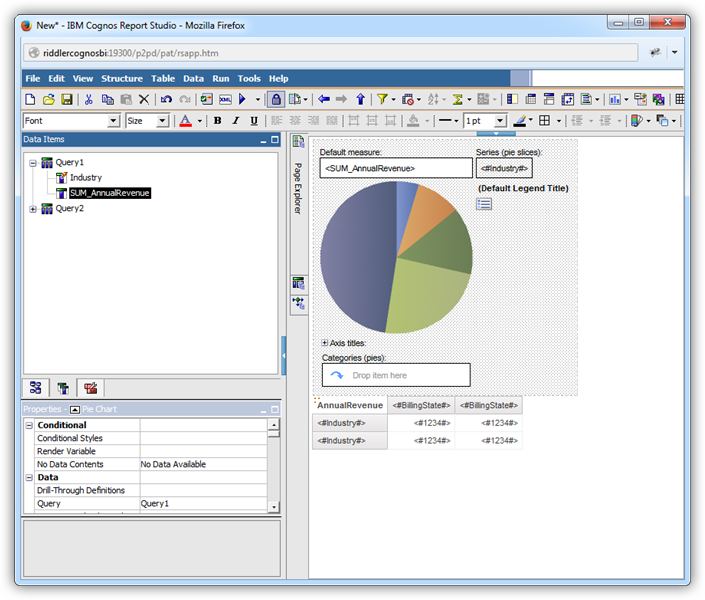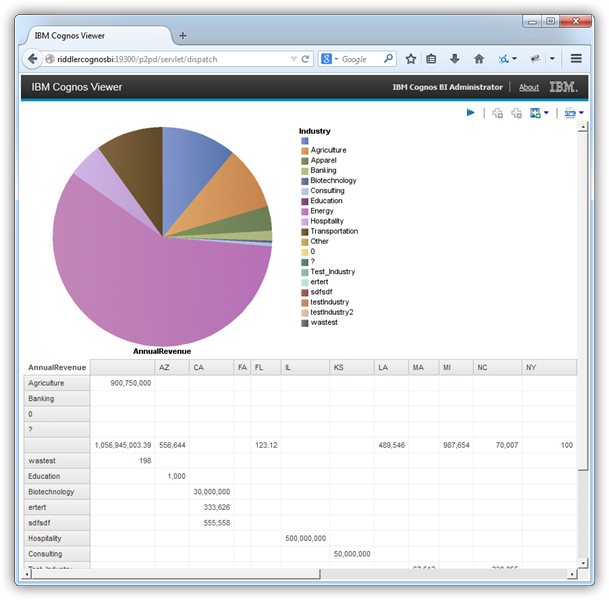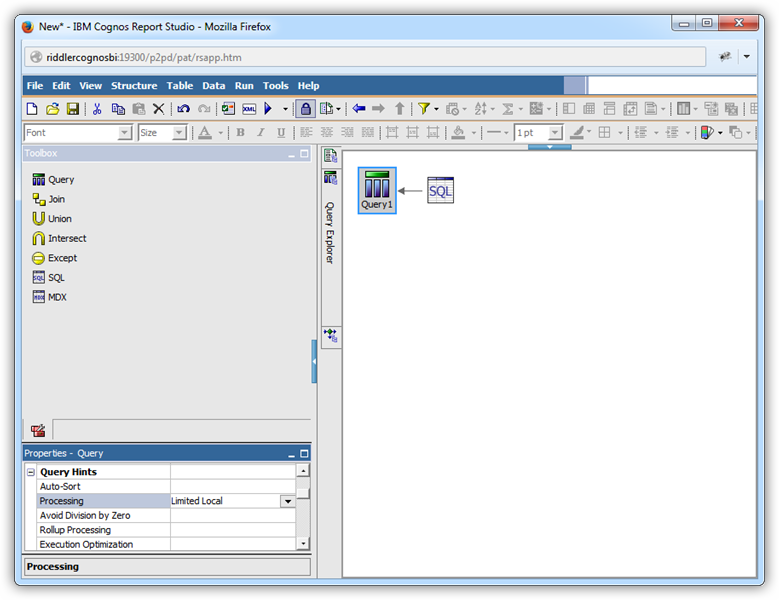Discover how a bimodal integration strategy can address the major data management challenges facing your organization today.
Get the Report →Create Data Visualizations in Cognos BI with Okta Data
Access Okta data as an ODBC data source in Cognos Business Intelligence and create data visualizations in Cognos Report Studio.
You can use the CData ODBC driver for Okta to integrate Okta data with the drag-and-drop style of Cognos Report Studio. This article describes both a graphical approach to create data visualizations, with no SQL required, as well as how to execute any SQL query supported by Okta.
Configure and Publish the Data Source
If you have not already, first specify connection properties in an ODBC DSN (data source name). This is the last step of the driver installation. You can use the Microsoft ODBC Data Source Administrator to create and configure ODBC DSNs.
To connect to Okta, set the Domain connection string property to your Okta domain.
You will use OAuth to authenticate with Okta, so you need to create a custom OAuth application.
Creating a Custom OAuth Application
From your Okta account:
- Sign in to your Okta developer edition organization with your administrator account.
- In the Admin Console, go to Applications > Applications.
- Click Create App Integration.
- For the Sign-in method, select OIDC - OpenID Connect.
- For Application type, choose Web Application.
- Enter a name for your custom application.
- Set the Grant Type to Authorization Code. If you want the token to be automatically refreshed, also check Refresh Token.
- Set the callback URL:
- For desktop applications and headless machines, use http://localhost:33333 or another port number of your choice. The URI you set here becomes the CallbackURL property.
- For web applications, set the callback URL to a trusted redirect URL. This URL is the web location the user returns to with the token that verifies that your application has been granted access.
- In the Assignments section, either select Limit access to selected groups and add a group, or skip group assignment for now.
- Save the OAuth application.
- The application's Client Id and Client Secret are displayed on the application's General tab. Record these for future use. You will use the Client Id to set the OAuthClientId and the Client Secret to set the OAuthClientSecret.
- Check the Assignments tab to confirm that all users who must access the application are assigned to the application.
- On the Okta API Scopes tab, select the scopes you wish to grant to the OAuth application. These scopes determine the data that the app has permission to read, so a scope for a particular view must be granted for the driver to have permission to query that view. To confirm the scopes required for each view, see the view-specific pages in Data Model < Views in the Help documentation.
When you configure the DSN, you may also want to set the Max Rows connection property. This will limit the number of rows returned, which is especially helpful for improving performance when designing reports and visualizations.
If you are running Cognos from a 64-bit machine and want to modify the DSN or create other Okta DSNs, you must use a system DSN. You will also need to open the 32-bit ODBC Data Source Administrator. You can open it with the following command:
C:\Windows\sysWOW64\odbcad32.exe
After creating a DSN, you can then publish the data source:
- Open Cognos Administration and click Data Source Connections to add a new data source:
-
Select the ODBC option and enter the DSN, CData Okta Sys, and a user-friendly name.
- Click Retrieve Objects and choose the CData Okta database object.
![The DSN used to add the data source. (Salesforce is shown.)]()
Add Data Visualizations to a Report
You can now create reports on Okta data in Cognos Report Studio by dragging and dropping table columns from the Source Explorer onto report objects. The sections below show how to create a simple report with a chart that shows up-to-date data.
As you build the report, Cognos Report Studio will generate SQL queries and rely on the driver to execute them. The driver will convert queries into requests to the Okta API. To execute queries to the live Okta data, the driver depends on the capabilities of the underlying API.
Create a Chart Based on an Aggregate
You can populate almost any report object in Cognos with Okta data by simply dragging and dropping columns from the Source Explorer onto the dimensions of the object. The column in the Series dimension of the chart is automatically grouped.
Additionally, Cognos sets a logical default aggregate function for the measure dimension based on the data type. For this example, override the default by clicking the ProfileFirstName column in the Data Items tab and set the Aggregate Function property to Not Applicable. The Rollup Aggregate Function property must be set to Automatic.

Convert a Query Object to SQL
When you know the query you need, or if you want to adjust the generated query, convert a query object into an SQL statement. After a query has been converted to SQL, the UI controls are not available for the query object. Follow the procedure below to populate a chart with user-defined SQL.
Cognos will rely on the driver to execute the user-defined query. Using the driver's SQL engine ensures that queries will always return up-to-date results, as there is no cached copy of the data.
- Hover over the Query Explorer and click the Queries folder to display the query objects in your report.
-
If you want to edit the autogenerated query, click the button in the Generated SQL property for the query object. In the resulting dialog, click Convert.
If you want to enter a new SQL statement, drop an SQL object in-line with the query object.
- Modify the properties for the SQL object: Select the Okta data source in the SQL properties and set the SQL Syntax property to Native.
Click the button in the SQL property and enter the SQL query in the resulting dialog. This example uses the query below:
SELECT Id, ProfileFirstName FROM Users WHERE Status = 'Active'Modify the properties for the query object: Set the Processing property to "Limited Local". This value is required to convert a query object to SQL.
![A query object created from an SQL statement.]()
Fill a Chart with the Results of a Query
You can now access the results of the SQL query as objects in the Data Items tab. Follow the procedure below to create a chart with the results; for example, the ProfileFirstName for each Id from the Users table.
- Return to the page by hovering over the Page Explorer and then clicking the page object.
- Drag a pie chart from the toolbox onto the workspace.
- In the properties for the chart, set the Query property to the name of the query you created above.
- Click the Data Items tab and drag columns onto the x- and y-axes. In this example, drag the Id column to the Series (pie slices) box and the ProfileFirstName column to the Default Measure box.
-
Modify the default properties for the Default Measure (the ProfileFirstName values): In the Aggregate Function box, select the Total option.

Run the report to add the results of the query.








